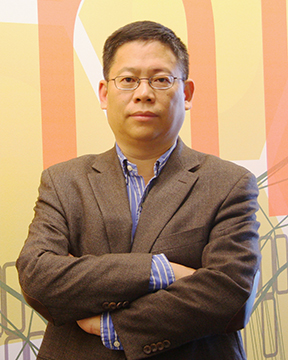Georgia Tech has named Younan Xia as the recipient of the 2019 Sigma Xi Sustained Research Award. Xia has joint appointments in three Georgia Tech academic units: the School of Chemistry and Biochemistry, the Wallace H. Coulter Department of Biomedical Engineering, and the School of Chemical and Biomolecular Engineering.
The award recognizes Xia’s sustained outstanding research at the intersection of biomedical research and nanotechnology and the original and important contributions he has made to advance these fields. Among them are gold nanocages for medicine and molecular imaging and electrospun nanofibers for regenerative medicine.
Gold Nanocages
Gold nanocages are multifunctional materials consisting of single-crystal nanoboxes with empty interiors, porous walls, and unique properties. For example, they have extraordinarily strong absorption and scattering capabilities, which can be optimized to the transparent window of soft tissues. For this reason, gold nanocages are superb contrast agents for imaging tissues by tomography. By incorporating a radioactive isotope (Au-198) in the gold nanocages, Xia enabled their use for real-time, in-vivo imaging.
“Xia’s research is truly revolutionary and unique, elegantly combining important elements of biomedical engineering, materials sciences, and chemistry and to address some of the key problems faced by our society.”
Gold nanocages can also absorb and convert near-infrared light to heat efficiently. When gold nanocages are delivered into a tumor, their ability to heat up when lit by near-IR light offers a way to kill cancer cells. The hollow interiors and porous walls of gold nanocages also make them ideal delivery vehicles for controlled and localized release of therapeutic agents in response to external stimuli such as near-infrared irradiation or high-intensity focused ultrasound.
Electrospun Nanofibers
In 2002, Xia first demonstrated the use of electrospinning to fabricate composite and ceramic nanofibers. This advance opened a world of opportunities for innovation based on electrospun nanofibers, including their use as scaffolds for regenerative medicine.
Numerous honors and awards reflect the tremendous impact of Xia’s research. He received the Materials Research Society Medal and the Georgia Tech Outstanding Faculty Research Author Award in 2017. In 2014, he was named Fellow of the American Chemical Society (ACS) for outstanding contributions to chemistry. The year before, he received the 2013 ACS Award in the Chemistry of Materials.
In 2017 and 2018, Xia was listed among the most highly cited researchers by Clarivate Analytics. He was ranked one of the Top 10 Chemists in the World from 1999−2009 by Times Higher Education, and one of the Top 100 Materials Scientists and Chemists in the World from 2000−2010 by Thomson Reuters.
“Xia’s research is truly revolutionary and unique, elegantly combining important elements of biomedical engineering, materials sciences, and chemistry and to address some of the key problems faced by our society,” a colleague says. “He has an outstanding track record in terms of creativity, originality, productivity, quality, sustainability, and external funding.”
“I am indebted to my group members, present and former, for their tremendous efforts and dedication to scientific research,” Xia says. “Over the past 20 some years, I have learned a lot from my interactions with all of them. Many of the research ideas simply originated from our weekly meetings and/or their unexpected observations during experiments.”
For More Information Contact
A. Maureen Rouhi, Ph.D.
Director of Communications
College of Sciences



